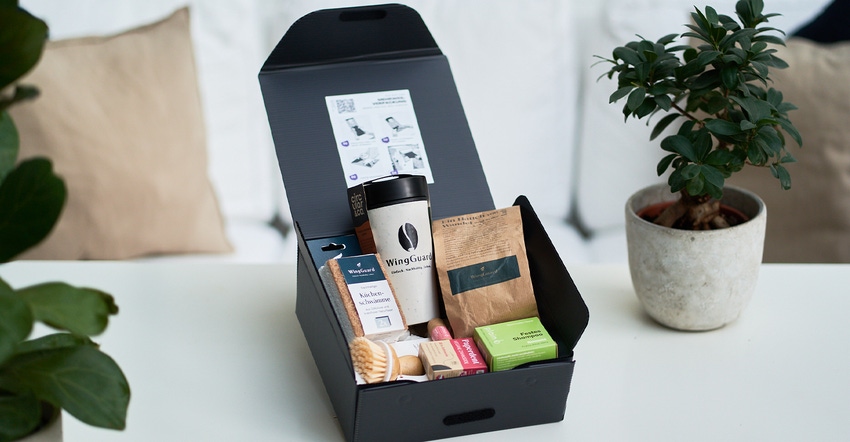Rhinopaq’s Answer to Reuse Packaging for E-Commerce
German startup rhinopaq is tackling packaging sustainability by producing reusable polypropylene (PP) shipping boxes for e-commerce companies. While the initial production has a higher carbon footprint than disposable cardboard, these PP boxes can be used more than 20 times, saving carbon emissions and wood resources, aligning with Europe's push for reusable and recyclable packaging by 2030.

Is plastic the least eco-friendly packaging material for shipping? Not necessarily. If it’s reused enough times, it could trump cardboard, often assumed to be a greener alternative. But the fiber-based commodity is taking its toll on forests. The world loses just over three billion trees to paper packaging each year, according to nonprofit environmental group Canopy.
German startup rhinopaq is one of a few fairly new companies that’s proving packaging’s sustainability is not just about the material it’s made of, but also about whether it’s designed to last.
Launched in the height of the COVID-driven online shopping boom, rhinopaq makes reusable polypropylene (PP) shipping boxes for ecommerce companies. The mono-material is durable, water resistant, and all of it can be recycled. After about their 20th use, boxes will be retired and broken down to make new ones.
The company sends them to online stores who have them filled and shipped to their customers. Once consumers pluck out the goods, they fold the boxes to the size of a large envelope and mail them to rhinopaq who refurbishes them in preparation for their next trip.
The initial product creates two and a half times more carbon emissions related to production than disposable cardboard. But after the third use the emissions are less than those generated by creating three new single-use packages, according to rhinopaq cofounder Marc Diefenbach.
“And everything above that is going to be great,” he says.
Through their own testing Diefenbach and his partner Matthias Thesing have found that after the 10th use, the PP boxes save 50% CO2 emissions over producing new cardboard boxes while saving wood resources.
Manufacturing the rugged plastic packages is an easy process. But figuring out how to work with different dimensions is tougher.
“It’s designed to be durable in a box state and to remain in that state while in use. But then it must be made very flat for recirculation, and that’s the hard part,” Diefenbach says.
A QR code inside the box enables consumers to see how many cycles a package has been through. They can also learn where else it’s been, which sometimes ends up good for online merchants and good for the consumer. Both seller and buyer tend to share a common interest: supporting sustainability. So, the story the QR code tells of the package’s past movement sometimes leads curious, environmentally-minded shoppers to other “green” companies.
“You see the packaging’s history—which stores used it. Maybe you got coffee online from a fair-trade company, and you see in the history a store that sells reusable diapers that may interest you,” Diefenbach says.
rhinopaq customer soulely.de is the business that supplies cloth diapers to its customers. A package designed for repeat use was a perfect pairing for a diaper also made to stay in circulation, figured soulely.de co-founders and husband and wife Philipp and Andrea Bettinger.
They also liked the idea of a stable box over a flexible bag to keep the fabric pristine en route.
The Bettinger’s ship about 3% of orders in rhinopaqs. While they plan to increase that figure, current limitations in box sizes are holding them back on scaling to the degree they’d like. Available sizes are dictated by the ability to return boxes through the postal service.
“But generally, it works well. Customers are impressed when they can choose a reusable package. This is not something they see often if they shop online,” Philipp says.
For now, disposable packaging is cheap, and companies pedaling a circular alternative find it hard to compete, at least when they get started. They typically reap cost savings as the number of reuses climbs. But there could be good news on the horizon to ease early growing pains, at least for entrepreneurs doing business in Europe.
In November 2022, the European Commission put forth a revision to its Packaging and Packaging Waste Directive that calls for all packaging to be reusable or recyclable by 2030. And there’s talk of incentives to jumpstart a transition to these sustainable models.
“We are looking forward to these regulations. It will be good for our business and also a good sign that the reusable packaging concept will get more awareness,” Diefenbach says.
The reusable packaging market is slowly but steadily gaining traction. The Reusable Packaging Association estimated this specialized sector’s worth at about $107 billion in a 2023 report, though applications for shipping merchandise to consumers’ doors hold a meager share.
Among companies trying to widen that market are Loop who’s gone global partnering with heavy hitters in the manufacturing, brand, and retail world; and other pioneers who are smaller but making headway with similar models, like Boox and Returnity.
Diefenbach looks back just a few years to his first days trying to break into this nascent niche. He and Thesing spent nights camped out in Diefenbach’s apartment living room slapping labels and seals on their small stash of boxes. Just finding someone to sell them the material was not easy.
“Suppliers would ask, how many boxes do you need, and when you say you want to start with just 1,000 they laugh,” he says.
Today rhinopaq has a modest but growing inventory, with about 5,000 packages in circulation. The entrepreneurs have onboarded partners to help with the manual tasks they once did on their own. And their manufacturing partner is in the wings to recycle them once they’re worn and ready to be reborn.
What Diefenbach has learned as he tries to get to the next level is patience.
“Packaging is not priority one for companies and online stores. It’s an auxiliary used to bring the product to consumers.”
He tells anyone thinking about hanging their own shingle in this space: “Be patient and understand that deciding to change to reusables takes time. Regulators are working to drive this transition, and consumers and businesses are becoming more aware. But you can’t change in a few days.”
About the Author(s)
You May Also Like




